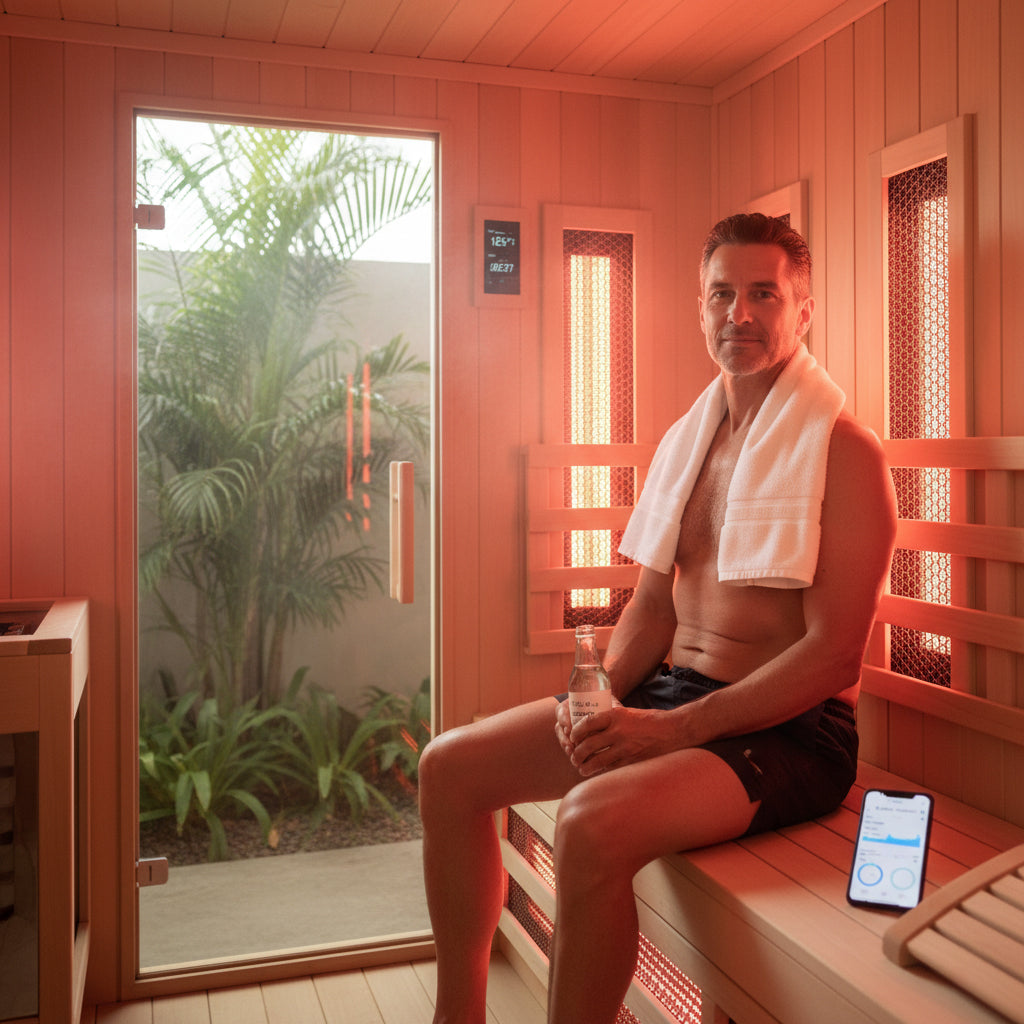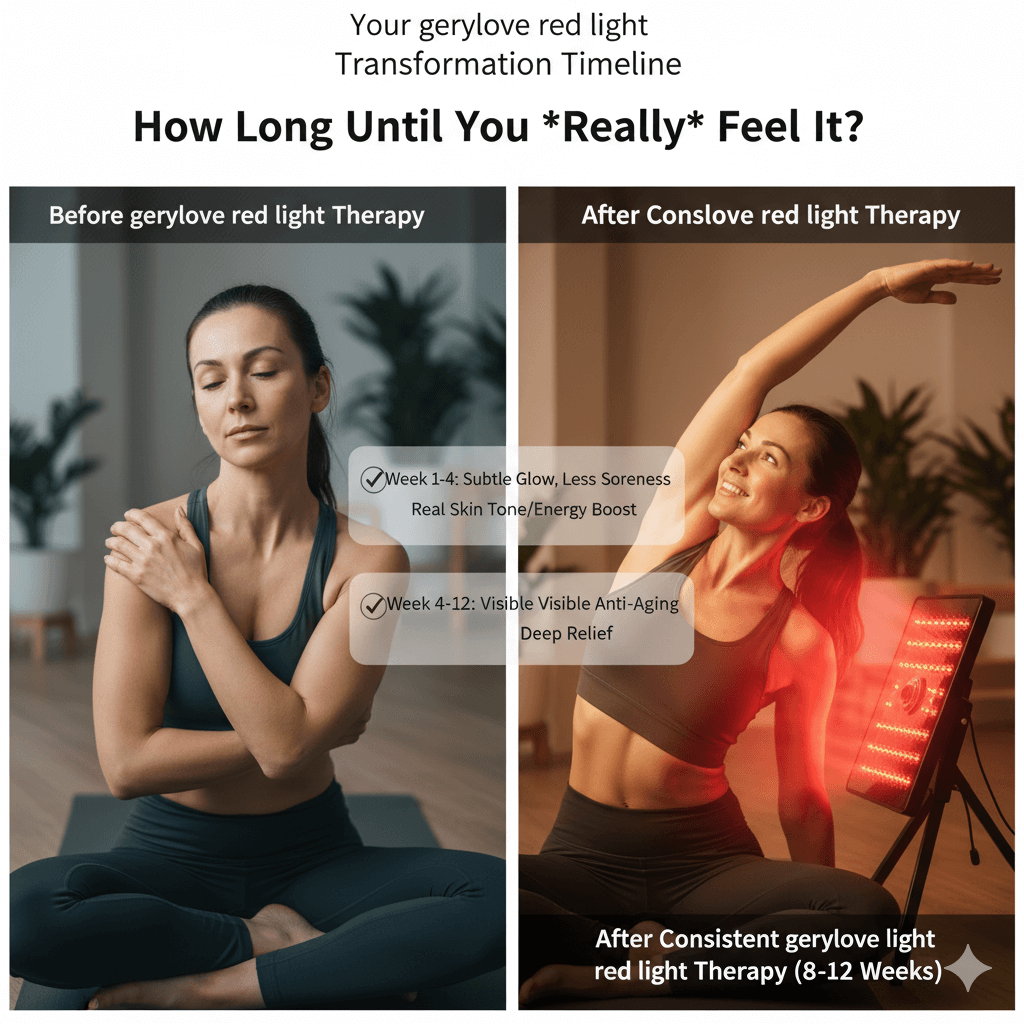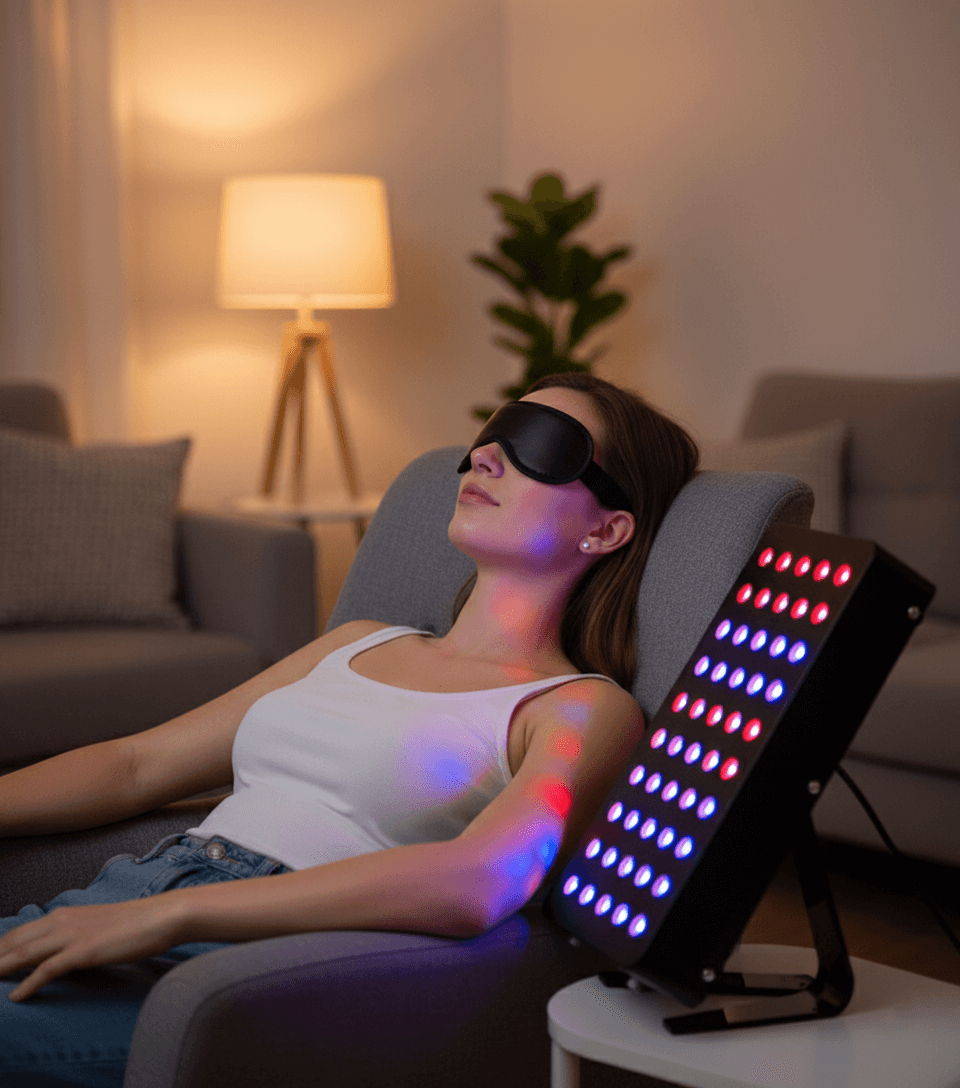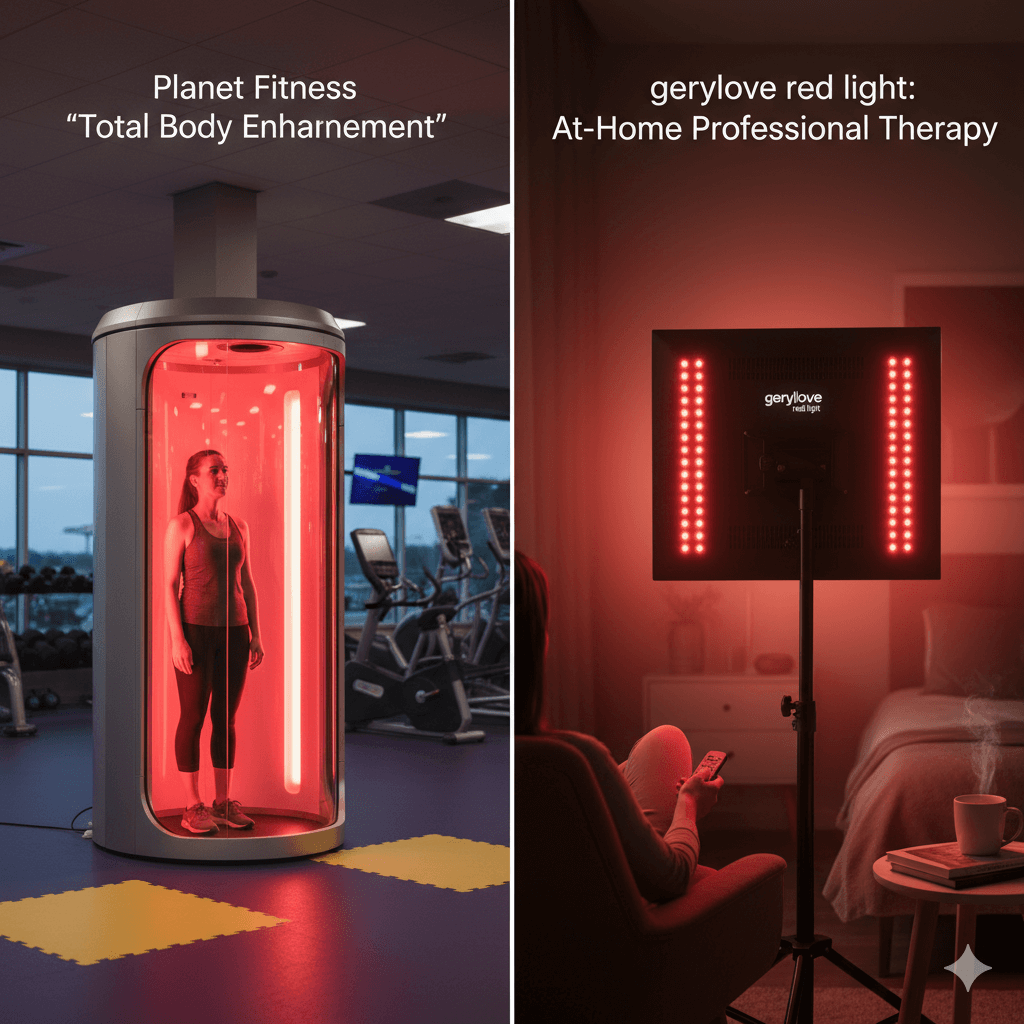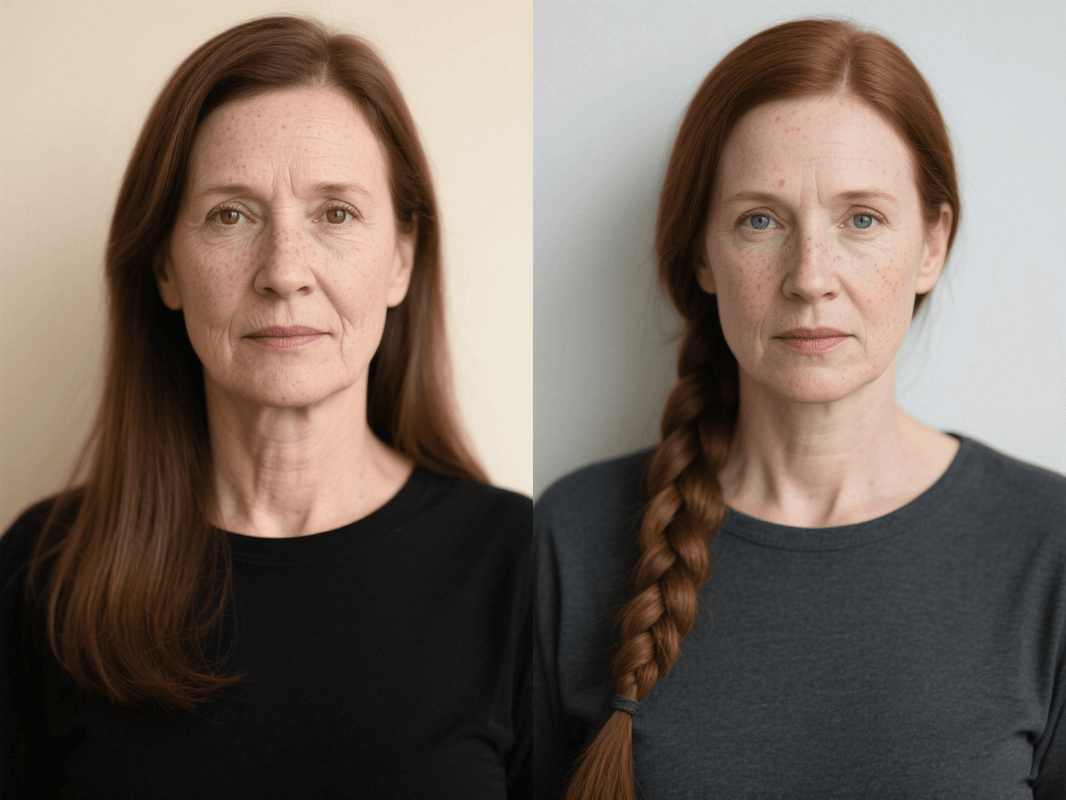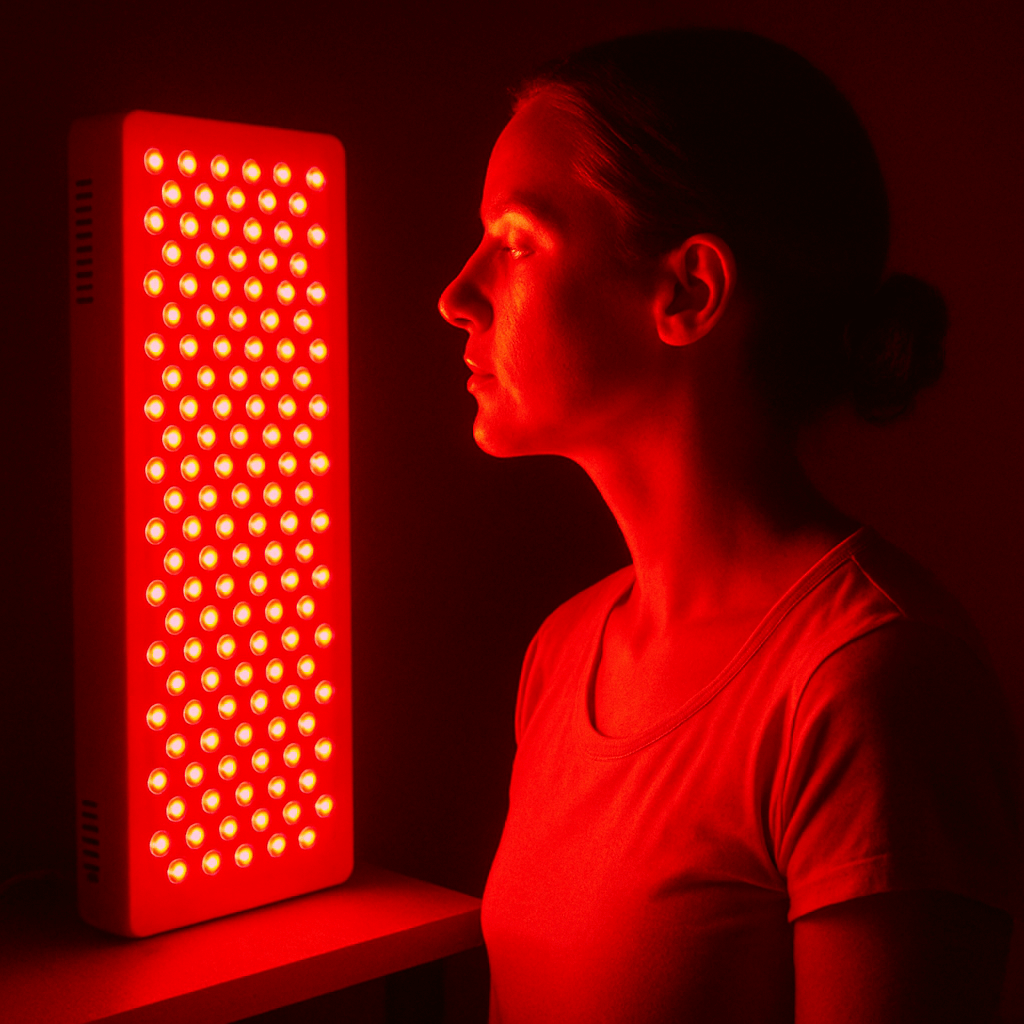Introduction: Shedding Light on the Truth, Dispelling the Myths
Red Light Therapy (RLT) has sparked a revolution in health and beauty with its remarkable benefits for skin rejuvenation, pain relief, and muscle recovery. Yet, as home-use red light devices become more accessible, a central question has emerged, sparking widespread concern: "Is red light therapy safe for my eyes? Could these rejuvenating beams secretly harm my vision?"
This article aims to provide a comprehensive and authoritative answer by diving deep into scientific research, expert opinions, and practical guidelines. We will debunk common myths about RLT, reveal its potential benefits and risks for the eyes, and give you a detailed, ergonomic guide for safe usage.

Part One: The Science Behind Red Light Therapy—How Does Light Affect Our Eyes?
1. What is Red Light Therapy?
Red Light Therapy, also known as Low-Level Laser Therapy (LLLT) or Photobiomodulation, is a non-invasive treatment. It uses specific wavelengths of red light (approx. 630-660nm) and near-infrared light (approx. 810-850nm) to penetrate the skin and tissue, working at a cellular level. The core mechanism is that these specific light wavelengths are absorbed by mitochondria, the energy centers of our cells, which stimulates cellular activity and boosts energy (ATP) production. This increase in energy can promote cell repair, reduce inflammation, and accelerate healing.
2. The Impact of Different Light Wavelengths on the Eyes
Not all light affects the eyes in the same way. Understanding the properties of different light types is key to grasping the safety of RLT.
-
UV Light: We know that ultraviolet (UV) light is harmful to the eyes. It primarily affects the surface of the eye, causing corneal and lens damage and increasing the risk of cataracts.
-
Blue Light: With a shorter wavelength and higher energy, blue light from electronic screens and LED lighting mainly impacts the shallow layers of the retina. Prolonged exposure can cause eye strain and discomfort, and may put stress on the retina.
-
Red and Near-Infrared Light (RLT): RLT's longer wavelengths carry gentle energy that penetrates deeper into tissue. Its main mechanism is stimulating cellular mitochondria rather than causing direct tissue damage. Scientific studies show that at appropriate intensities and durations, the risk of red light to the retina is minimal.
3. The Core Scientific Evidence
As ophthalmology researcher Dr. Elena Martinez points out, "When used improperly, any light source—even therapeutic wavelengths—can impact delicate ocular tissues." However, a wealth of scientific research provides strong support for RLT.
-
A 2023 analysis in the Journal of Photomedicine, which synthesized findings from 17 studies, concluded: At therapeutic intensities (<100mW/cm²), RLT shows negligible retinal risk when exposure limits are observed.
-
Mitochondrial Stimulation: Red and near-infrared light can be absorbed by the mitochondria in retinal cells. Far from causing damage, this absorption may enhance their function, promoting cellular energy production and supporting overall retinal health.
Part Two: The "Double-Edged Sword" of RLT for the Eyes—Risks and Potential Benefits
The impact of red light therapy on the eyes is not one-dimensional. It's a double-edged sword, with potential risks on one side and exciting benefits on the other.
1. Valid Eye Concerns
-
Photochemical Stress: Prolonged, high-intensity sessions can fatigue retinal cells, leading to temporary eye discomfort or blurred vision.
-
Device Hazards: Low-quality, non-FDA-cleared devices may have issues with inaccurate wavelengths, unstable light intensity, and even harmful infrared "bleed," all of which can damage the eyes.
-
Individual Sensitivities: A small percentage of people may be particularly sensitive to light, experiencing eye discomfort even with proper use. According to a 2024 report in the Ocular Therapy Journal, about 8% of users report transient light sensitivity.
-
Improper Use: Failing to follow device guidelines—such as using it too close to the face, for too long, or without protective eyewear—is the primary cause of eye risks.
2. Evidence-Supported Eye Benefits
Despite the risks, a growing body of research suggests that when used correctly, RLT may have positive therapeutic effects on the eyes.
-
Dry Eye Relief: A 2023 NIH trial showed that RLT can reduce dry eye symptoms by 68%. The mechanism may involve improving eyelid gland function and reducing inflammation.
-
Macular Support: RLT can enhance mitochondrial function in the retinal pigment epithelium, providing support for macular health.
-
Post-Surgical Healing: In cataract patients, RLT was found to accelerate corneal repair by 40%, thanks to its cell-regenerating and anti-inflammatory effects.
-
Neuroprotective Effects: Emerging research indicates that RLT has potential neuroprotective properties. For instance, in animal models, 810nm near-infrared light can boost ATP production in optic nerve cells, reducing intraocular pressure by 16% and offering a new avenue for glaucoma treatment.
-
Age-Related Macular Degeneration (AMD): Human trials show that bi-weekly 670nm treatments can slow the accumulation of drusen, a hallmark of macular degeneration, by 34%.
-
Diabetic Retinopathy: Early evidence suggests that RLT can reduce vascular leakage through its anti-inflammatory effects, offering hope for patients with diabetic retinopathy.
Part Three: RLT Eye Safety Guide—How to Protect Your Vision
To ensure RLT is safe and effective for your eyes, it's crucial to follow the correct procedures. This includes choosing the right device, wearing proper protective eyewear, and adhering to best practices.
1. Essential Eye Protection: Protective Eyewear
This is your first and non-negotiable line of defense for your eyes.
-
Choose the Right Goggles: Use amber or red-tinted goggles that block 99% of 400-550nm light.
-
Avoid Misconceptions: Don't use clear lenses; they offer virtually no protection. Also, closing your eyes doesn't provide complete protection against infrared light (eyelids only block about 75%). Therefore, wearing professional-grade goggles is essential.

2. Best Practices: Duration, Distance, and Frequency
-
Safe Distance: Place the device 12-18 inches (approx. 30-45 cm) from your face to ensure the light intensity is moderate and covers the treatment area evenly.
-
Reasonable Duration: Limit each session to 10-15 minutes. Longer exposures (>20 minutes) increase the risk of retinal fatigue.
-
Usage Frequency: Follow the device manufacturer's recommendations, usually 3-5 times per week. Overuse will not lead to better results and may increase risks.
3. Special Considerations for High-Risk Groups
Certain individuals are more sensitive to RLT and need to be extra cautious:
-
Patients with Pre-existing Eye Conditions: Individuals with glaucoma, cataracts, or macular degeneration should consult an ophthalmologist before starting treatment.
-
Users of Photosensitizing Drugs: People taking medications like tetracyclines or psoralens, which increase light sensitivity, should use RLT with caution.
-
Children and Teenagers: Their eye tissues are still developing, making them potentially more susceptible to light exposure risks.
4. How to Choose a Safe RLT Device
Device quality is a crucial factor in ensuring safety.
-
Look for FDA Clearance: FDA-cleared devices have undergone rigorous safety testing and meet specific standards, making them more reliable.
-
Check for Wavelength Accuracy and Filters: High-quality devices provide accurate wavelengths and are equipped with effective infrared filters to prevent harmful light bleed.
-
Look for Safety Certifications: Seek out devices with IEC 62471 photobiological safety certification, which is the gold standard for light therapy device safety.
-
Choose Devices with an Auto-Shutoff Function: Some devices have a built-in 15-minute auto-shutoff, which effectively prevents accidental prolonged exposure.
Part Four: Debunking Myths and Misconceptions
To better understand RLT, we must differentiate common myths from scientific facts.
-
Myth 1: "All red light damages the eyes equally."
-
Fact: Wavelength is key. 650nm red light is 23 times safer for the retina than 450nm blue light. Red light's mechanism of action is fundamentally different from that of harmful UV and blue light.
-
-
Myth 2: "Closing my eyes provides full protection."
-
Fact: Eyelids can block some visible light, but they offer limited protection against near-infrared wavelengths. NIR light can penetrate the eyelids, making professional protective eyewear the only complete safety measure.
-
-
Myth 3: "More power equals better results."
-
Fact: Not necessarily. The key is using the correct wavelength and appropriate intensity. A power of 100mW/cm² at the wrong wavelength may be less effective than 10mW/cm² at the correct one.
-
Part Five: The Balance Between Professional Guidance and Self-Care
Deciding between using a home device or visiting a professional clinic is a choice many face.
-
Professional Clinics: Operated by trained technicians using calibrated, medical-grade equipment and providing professional eye protection, offering a higher level of safety.
-
Home Devices: Offer convenience and flexibility, but users are responsible for proper usage. Therefore, choosing a quality, FDA-cleared device and strictly following its guidelines are essential for safety.
Final Verdict: Is RLT Bad for Your Eyes?
Based on our comprehensive analysis of extensive scientific research and expert opinions, we can conclude:
"When used with appropriate eyewear, duration limits (<15 min/session), and FDA-cleared devices, red light therapy presents minimal ocular risk while offering potential therapeutic benefits for specific eye conditions."—Cochrane Review on Photobiomodulation, 2024
Red light therapy is not inherently harmful, but it demands our respect and cautious use. By following these three core safety steps, you can confidently explore the benefits of RLT while protecting your precious vision:
-
Consult your ophthalmologist before you begin.
-
Invest in medical-grade protective eyewear.
-
Never exceed the device manufacturer's guidelines.
While current evidence is reassuring, the long-term effects beyond 5 years are still under study. When in doubt, always prioritize protecting those precious peepers! 👁️✨


